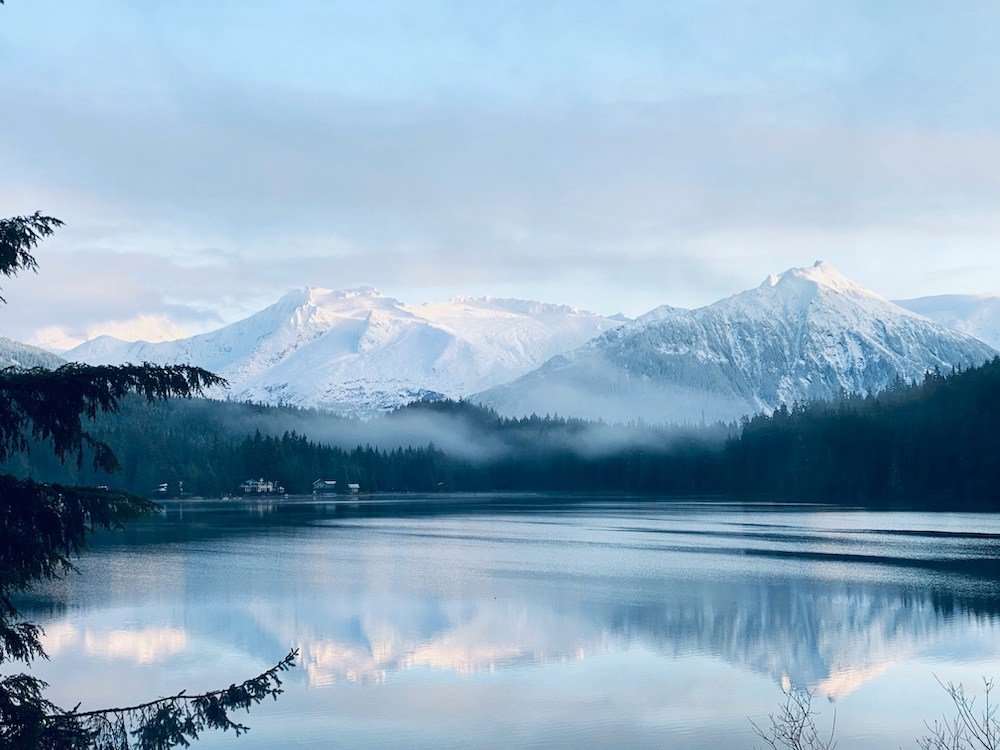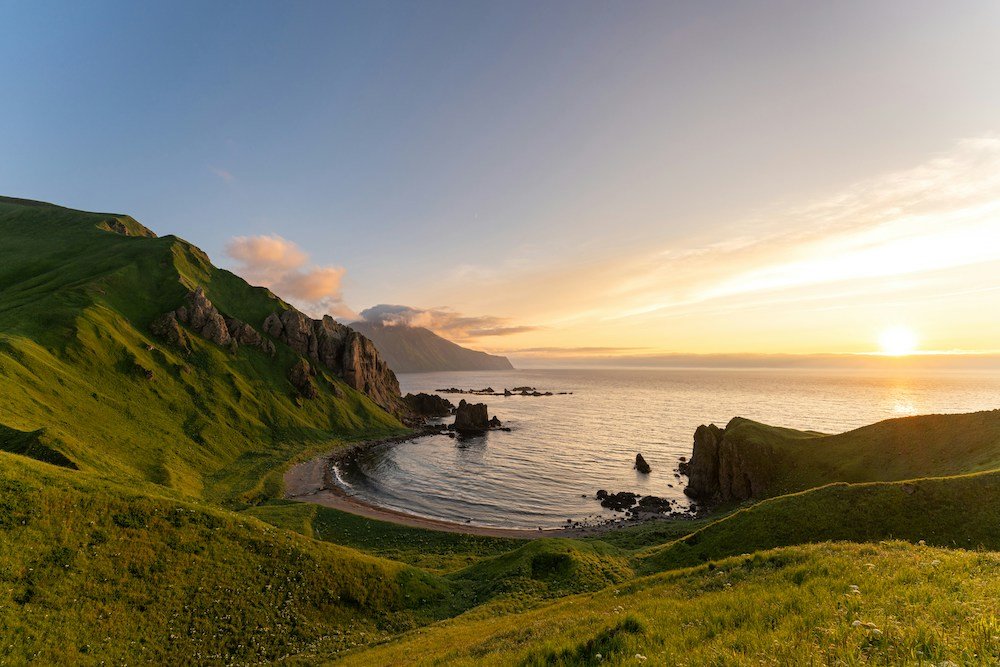
The Aleutian Islands, stretching over 1,200 miles across the northern Pacific Ocean, represent a unique and captivating archipelago nestled between the United States’ Alaska Peninsula and Russia’s Kamchatka Peninsula.
With its rugged beauty and rich cultural heritage, the Aleutian Islands stand as a testament to nature’s grandeur and human resilience.
The Aleutian Islands consist of around 300 islands, of which 14 are inhabited.
These islands form a part of the larger Alaska Maritime National Wildlife Refuge, renowned for its stunning landscapes, abundant wildlife, and thriving marine ecosystems.
Among the most notable islands are Unalaska, Adak, and Kodiak, each offering its own distinct allure and attractions.
Geographically, the Aleutian Islands serve as a bridge between two continents, serving as a crucial link between North America and Asia.
This strategic location has not only influenced the region’s natural environment but has also shaped its cultural and historical narrative.
Throughout history, the Aleutian Islands have been inhabited by indigenous peoples known as the Aleuts, whose rich heritage and traditions are deeply intertwined with the land and sea.
The islands have also played a significant role in maritime exploration and trade routes, attracting explorers and traders from around the world.
From the early days of Russian fur traders to the pivotal battles of World War II, the Aleutian Islands have witnessed a tapestry of human endeavors and historical events, leaving behind a legacy that continues to fascinate and inspire visitors to this day.
1. Geography and Climate

The Aleutian Islands boast a rugged and awe-inspiring landscape, characterized by volcanic peaks, rocky shores, and dramatic coastlines.
This unique geography, shaped by geological forces and millennia of natural processes, creates an unparalleled environment for exploration and discovery.
Stretching in a graceful arc from the Alaska Peninsula to the Kamchatka Peninsula, the Aleutian Islands form a chain of volcanic islands that bridge the gap between the North American and Eurasian tectonic plates.
Many of these islands are volcanic in origin, with towering peaks such as Mount Shishaldin on Unimak Island, reaching heights of over 9,000 feet.
The rugged terrain is complemented by lush valleys, pristine beaches, and expansive tundra, offering a diverse array of habitats for wildlife and vegetation.
Glacial activity has also left its mark on the landscape, carving out fjords and shaping the coastline with its icy embrace.
The Aleutian Islands experience a maritime climate characterized by cool temperatures, frequent precipitation, and persistent fog.
The region’s proximity to the North Pacific Ocean moderates temperatures throughout the year, with relatively mild winters and cool summers.
One of the defining features of the Aleutian climate is its unpredictable weather patterns, which can change rapidly and dramatically.
Visitors should be prepared for rain, wind, and fog, which are common occurrences throughout the year. The islands’ exposed location also makes them susceptible to storms and high winds, particularly during the winter months.
When packing for a trip to the Aleutian Islands, it’s essential to come prepared for a variety of weather conditions.
Waterproof and windproof clothing is a must, along with sturdy footwear suitable for hiking and exploring rugged terrain. Layered clothing is recommended to adapt to changing temperatures and conditions.
Other essential items to pack include a reliable waterproof jacket, gloves, hats, and sunglasses to protect against the elements.
It’s also advisable to bring along insect repellent and sunscreen, as well as any necessary medications or personal items.
By packing thoughtfully and preparing for the Aleutian climate, visitors can fully immerse themselves in the awe-inspiring beauty of this remote and captivating wilderness.
2. How to Get There

Planning a journey to the Aleutian Islands involves navigating through remote and rugged terrain, but with careful planning, travelers can access this breathtaking destination via a variety of transportation options.
Travelers to the Aleutian Islands typically have two primary transportation options: air travel and sea travel.
Air Travel: Many visitors opt to fly to the Aleutian Islands due to their remote location and limited accessibility by road. Several airlines offer scheduled flights to major airports in the region, providing convenient connections from cities such as Anchorage and Seattle. Charter flights are also available for travelers seeking a more flexible and personalized travel experience.
Sea Travel: For those with a sense of adventure and a love of the sea, traveling to the Aleutian Islands by ferry or cruise ship offers a unique and unforgettable journey. Several cruise lines offer itineraries that include stops in the Aleutian Islands, allowing passengers to explore the rugged coastline and picturesque harbors at their leisure.
The Aleutian Islands are served by several major airports and ports of entry, providing convenient access for travelers from around the world.
Major Airports: The primary airports serving the Aleutian Islands include Ted Stevens Anchorage International Airport (ANC) and Fairbanks International Airport (FAI) in Alaska. From these airports, travelers can catch connecting flights to destinations such as Unalaska/Dutch Harbor Airport (DUT) and Adak Airport (ADK) in the Aleutian chain.
Ports of Entry: The Aleutian Islands are also accessible by sea through a network of ports and harbors along the coast of Alaska. The Port of Dutch Harbor, located on Unalaska Island, serves as a major hub for maritime traffic in the region, providing vital services and facilities for commercial and recreational vessels alike.
Traveling to remote locations in the Aleutian Islands requires careful planning and consideration of logistical challenges.
Remote Accessibility: Many of the islands in the Aleutian chain are sparsely populated and lack extensive infrastructure, making travel between islands and remote locations more challenging. Visitors should be prepared for limited transportation options and potential delays due to weather and other factors.
Provisions and Supplies: It’s essential to stock up on provisions and supplies before embarking on a journey to remote locations in the Aleutian Islands. Some areas may have limited access to amenities such as food, fuel, and medical services, so travelers should plan accordingly and pack essentials for their trip.
Local Knowledge and Expertise: Engaging with local guides and experts can enhance the travel experience and provide valuable insights into the history, culture, and natural environment of the Aleutian Islands. Whether embarking on a guided tour or exploring independently, seeking out local knowledge can help travelers make the most of their time in this remote and remarkable destination.
3. Accommodations

Finding suitable accommodations is an essential aspect of planning a trip to the Aleutian Islands, where visitors can immerse themselves in the natural beauty and tranquility of this remote wilderness.
From cozy bed and breakfasts to rustic cabins and wilderness lodges, there are accommodations to suit every traveler’s preferences and budget.
Types of Accommodations Available:
- Hotels and Inns: Several hotels and inns are scattered across the Aleutian Islands, offering comfortable accommodations with modern amenities such as Wi-Fi, heating, and hot water. These establishments provide a convenient home base for exploring the surrounding area and experiencing local culture and hospitality.
- Cabins and Cottages: For travelers seeking a more secluded and intimate experience, cabins and cottages offer a cozy retreat amidst the rugged wilderness of the Aleutian Islands. These rustic accommodations often feature stunning views of the surrounding landscape and provide an ideal setting for relaxation and rejuvenation.
- Campgrounds and RV Parks: Outdoor enthusiasts can enjoy the unparalleled beauty of the Aleutian Islands by camping in designated campgrounds and RV parks. These facilities offer basic amenities such as picnic tables, fire pits, and restroom facilities, allowing visitors to immerse themselves in nature while enjoying the comforts of home.
Due to the remote nature of the Aleutian Islands and the limited availability of accommodations, it is advisable to book accommodations in advance, especially during the peak travel season.
Many accommodations fill up quickly, particularly in popular tourist destinations such as Unalaska and Adak, so early booking ensures availability and peace of mind.
Travelers can utilize online booking platforms, travel agencies, or directly contact accommodations providers to secure reservations.
Flexibility in travel dates and lodging options can also increase the likelihood of finding suitable accommodations, particularly during busy periods.
Options for Lodging on Different Islands:
- Unalaska: As one of the largest and most populated islands in the Aleutian chain, Unalaska offers a variety of lodging options, including hotels, bed and breakfasts, and vacation rentals. Visitors can choose accommodations in the bustling port town of Dutch Harbor or opt for more secluded retreats in the surrounding countryside.
- Adak: The island of Adak boasts a unique blend of military history and natural beauty, with accommodations ranging from hotels and lodges to cabins and guesthouses. Visitors can enjoy panoramic views of the surrounding landscape and explore historic sites such as the Adak National Forest and Adak Army Base.
- Kodiak: Located further east in the Aleutian chain, Kodiak Island offers a diverse array of accommodations, including hotels, motels, and vacation rentals. Travelers can explore the island’s rich cultural heritage and outdoor recreational opportunities while enjoying comfortable and convenient lodging options.
4. Wildlife and Nature
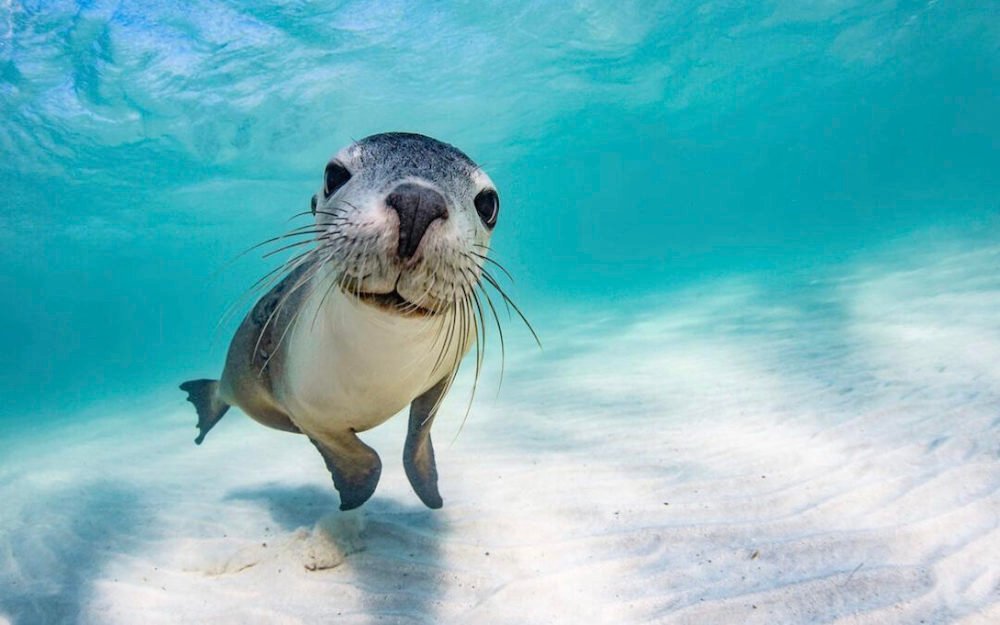
The Aleutian Islands are renowned for their pristine wilderness and diverse array of wildlife, offering visitors the opportunity to experience nature in its purest form.
From majestic marine mammals to elusive seabirds, the islands teem with life, providing a glimpse into the intricate web of ecosystems that thrive in this remote corner of the world.
Unique Wildlife Found in the Aleutian Islands:
- Marine Mammals: The waters surrounding the Aleutian Islands are home to a rich variety of marine mammals, including whales, seals, sea lions, and otters. Visitors may encounter humpback whales breaching the surface, sea otters floating lazily in kelp forests, and Steller sea lions basking on rocky shores.
- Seabirds: The Aleutian Islands serve as a vital breeding ground and migratory stopover for millions of seabirds, including puffins, albatrosses, and shearwaters. Birdwatchers can marvel at the sight of vast seabird colonies nesting on coastal cliffs and rocky outcrops, filling the air with their distinctive calls and cries.
- Land Mammals: While the Aleutian Islands are predominantly inhabited by marine species, several land mammals have also adapted to life in this rugged environment. Visitors may encounter Arctic foxes darting through tundra, reindeer grazing on grassy slopes, and brown bears foraging along riverbanks and salmon streams.
Responsible Wildlife Viewing Practices:
When observing wildlife in the Aleutian Islands, it is essential to practice responsible and ethical behavior to minimize disturbance and protect the animals and their habitats. Some guidelines for responsible wildlife viewing include:
- Maintain a Safe Distance: Observe wildlife from a safe and respectful distance to avoid causing stress or disturbance. Use binoculars or telephoto lenses to get a closer look without encroaching on their space.
- Minimize Noise and Disturbance: Keep noise levels to a minimum and avoid sudden movements that could startle or disrupt wildlife. Remain calm and patient, allowing animals to go about their natural behaviors undisturbed.
- Respect Wildlife Habitat: Stay on designated trails and observation areas to minimize habitat disturbance and avoid trampling sensitive vegetation. Be mindful of nesting sites and breeding areas, and avoid approaching too closely.
- Dispose of Waste Properly: Practice Leave No Trace principles by packing out all trash and waste from wildlife viewing areas. Dispose of litter and food scraps responsibly to prevent pollution and harm to wildlife.
National Parks and Protected Areas:
The Aleutian Islands are home to several national parks and protected areas, preserving critical habitats and ecosystems for future generations to enjoy. Some notable parks and reserves include:
- Alaska Maritime National Wildlife Refuge: Encompassing over 3.4 million acres of land and sea, the Alaska Maritime National Wildlife Refuge protects vital breeding grounds for seabirds, marine mammals, and other wildlife.
- Katmai National Park and Preserve: Located near the eastern edge of the Aleutian chain, Katmai National Park and Preserve is renowned for its spectacular landscapes, including the Valley of Ten Thousand Smokes and the world-famous bear viewing opportunities at Brooks Falls.
- Aleutian World War II National Historic Area: This historic area preserves and interprets the remnants of the Aleutian Islands’ role in World War II, including military installations, artifacts, and cultural sites associated with the conflict.
Exploring these national parks and protected areas offers visitors a chance to connect with nature, immerse themselves in the region’s rich biodiversity, and gain a deeper appreciation for the ecological significance of the Aleutian Islands.
5. Cultural and Historical Significance
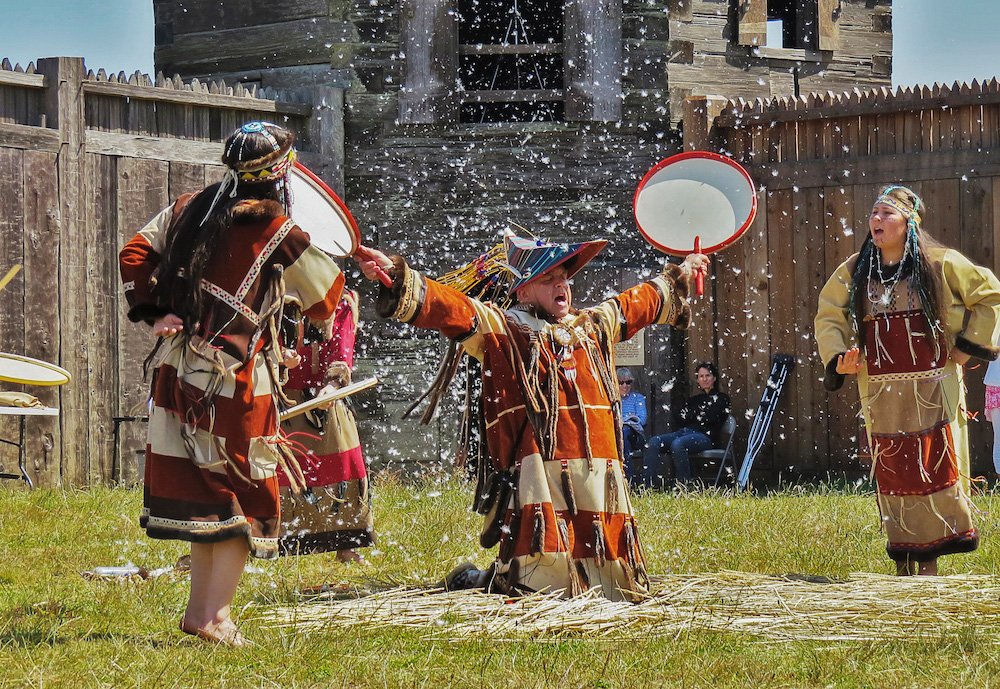
The Aleutian Islands are steeped in a rich tapestry of cultural heritage and historical significance, shaped by the resilience of indigenous peoples and the legacy of explorers, settlers, and military conflicts.
From ancient traditions to modern-day cultural institutions, the islands offer a wealth of experiences that celebrate their unique heritage and historical narrative.
The Aleutian Islands have been home to indigenous peoples known as the Aleuts for thousands of years, whose culture, language, and traditions are deeply rooted in the land and sea.
The Aleut people have maintained a close connection to their ancestral homeland, relying on fishing, hunting, and gathering for sustenance and survival.
Today, Aleut communities continue to preserve and celebrate their cultural heritage through traditional arts, storytelling, and ceremonies.
Visitors to the Aleutian Islands can learn about the rich history and customs of the Aleut people through cultural programs, guided tours, and interactions with local residents.
Historical Events and Landmarks:
The Aleutian Islands bear witness to a diverse array of historical events and landmarks that have shaped the region’s identity and significance. From ancient archaeological sites to World War II battlegrounds, the islands are steeped in stories of exploration, conflict, and resilience.
- Russian Exploration: The Aleutian Islands were first explored by Russian fur traders in the 18th century, who established trading outposts and settlements along the coast. Russian Orthodox churches and artifacts still stand as reminders of this early period of exploration and colonization.
- World War II: The Aleutian Islands played a pivotal role in World War II, serving as a strategic battleground between American and Japanese forces. Visitors can explore historic sites such as the Dutch Harbor Naval Operating Base and Fort Schwatka, which bear testament to the sacrifices and struggles endured during the war.
- Aleutian World War II National Historic Area: This designated historic area preserves and interprets the remnants of military installations, bunkers, and artifacts associated with the Aleutian Islands’ role in World War II, providing insight into the region’s wartime history and legacy.
Museums and Cultural Centers:
For those eager to delve deeper into the cultural and historical significance of the Aleutian Islands, a visit to the region’s museums and cultural centers offers a comprehensive insight into the diverse heritage and legacy of the area.
- Museum of the Aleutians: Located in the town of Unalaska, the Museum of the Aleutians showcases exhibits and artifacts that trace the history and culture of the Aleut people, from ancient times to the present day. Visitors can explore interactive displays, artifacts, and artwork that highlight the region’s rich cultural heritage.
- Alaska Native Heritage Center: Situated in Anchorage, the Alaska Native Heritage Center offers a captivating journey through the diverse cultures and traditions of Alaska’s indigenous peoples, including the Aleut, Inuit, and Athabaskan communities. The center features exhibits, demonstrations, and cultural performances that celebrate the vibrancy and resilience of Alaska’s native peoples.
Exploring these museums and cultural centers provides visitors with a deeper understanding of the Aleutian Islands’ cultural and historical significance, fostering appreciation and respect for the region’s rich heritage and traditions.
6. Main Islands of the Aleutian Chain
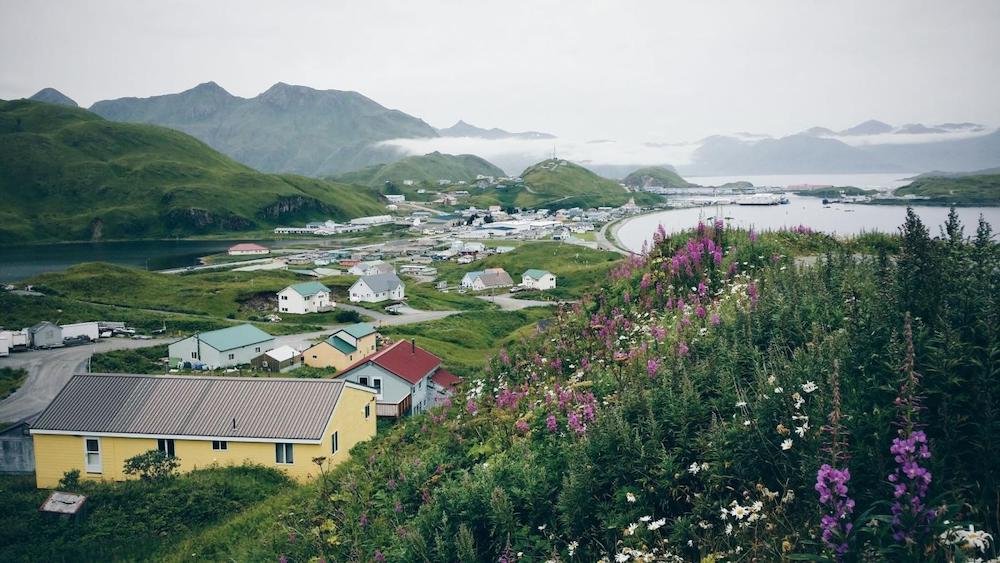
The Aleutian Islands encompass a diverse array of landscapes and communities, each with its own unique charm and allure.
From the bustling port town of Unalaska to the rugged wilderness of Adak and Kodiak, the main islands of the Aleutian chain offer visitors a captivating journey through history, culture, and natural beauty.
Introduction to the Main Islands:
- Unalaska: Situated at the eastern end of the Aleutian chain, Unalaska is the largest and most populous island in the region. Home to the bustling port town of Dutch Harbor, Unalaska is a hub of activity and commerce, offering a blend of history, culture, and outdoor adventure.
- Adak: Located further west in the Aleutian chain, Adak Island is renowned for its rugged terrain, abundant wildlife, and military history. Once home to a thriving naval base, Adak now welcomes visitors with its untouched wilderness, pristine beaches, and opportunities for outdoor exploration.
- Kodiak: As the largest island in the Aleutian chain, Kodiak Island boasts a diverse array of landscapes, from towering mountains to lush forests and picturesque coastlines. Known for its rich cultural heritage and abundant wildlife, Kodiak offers visitors the chance to experience Alaska’s natural wonders in a pristine and unspoiled setting.
Unique Features and Attractions of Each Island:
- Unalaska: Visitors to Unalaska can explore historic sites such as the Russian Orthodox Church of the Holy Ascension, dating back to the 19th century, and the Aleutian World War II National Historic Area, which preserves the remnants of military installations from World War II. Outdoor enthusiasts can hike scenic trails, go birdwatching, or embark on fishing and wildlife excursions.
- Adak: Adak Island offers visitors the opportunity to explore abandoned military installations, hike rugged terrain, and observe abundant wildlife, including seabirds, marine mammals, and migratory waterfowl. Outdoor activities such as fishing, kayaking, and wildlife viewing are popular among visitors seeking adventure and solitude.
- Kodiak: Kodiak Island is renowned for its world-class fishing, particularly for salmon and halibut, making it a popular destination for anglers from around the world. Visitors can also explore cultural attractions such as the Alutiiq Museum and Kodiak National Wildlife Refuge, home to diverse wildlife and breathtaking scenery.
Accessibility and Transportation Between Islands:
Traveling between the main islands of the Aleutian chain requires careful planning and consideration of transportation options.
While each island has its own airport and seaport, transportation between islands may be limited and subject to weather and logistical constraints.
Scheduled flights are available between major airports such as Unalaska/Dutch Harbor Airport, Adak Airport, and Kodiak Airport, providing convenient connections for travelers.
Additionally, charter flights and private air taxi services offer flexible options for exploring remote locations and accessing hard-to-reach destinations.
For those seeking a more adventurous journey, ferry services may be available between certain islands, providing an opportunity to experience the scenic beauty and rugged coastline of the Aleutian chain from the water.
7. Outdoor Activities
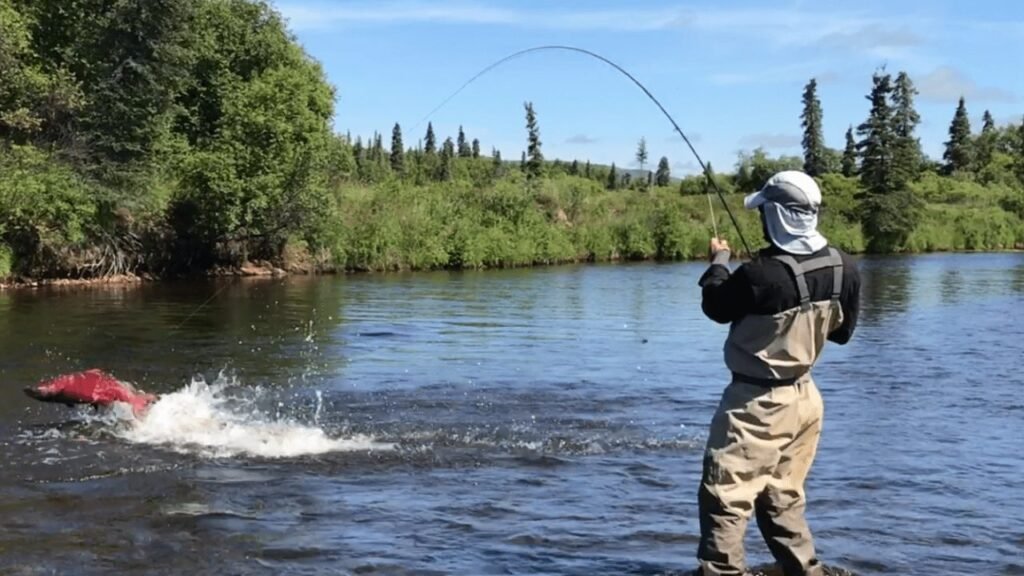
The Aleutian Islands offer a wealth of outdoor activities for adventurers and nature enthusiasts, providing opportunities to explore rugged landscapes, encounter diverse wildlife, and immerse oneself in the pristine beauty of the natural world.
From scenic hiking trails to world-class fishing and water-based adventures, there’s something for everyone to enjoy in this remote wilderness.
Hiking Trails and Outdoor Recreation:
- Unalaska: Visitors to Unalaska can explore a network of scenic hiking trails that wind through volcanic terrain, lush valleys, and coastal cliffs. Popular trails include the Mount Ballyhoo Trail, which offers panoramic views of Dutch Harbor and the surrounding islands, and the Pyramid Valley Trail, known for its diverse wildlife and alpine scenery.
- Adak: Adak Island boasts miles of rugged terrain and pristine wilderness, making it an ideal destination for outdoor exploration and adventure. Hikers can traverse remote trails that meander through tundra, volcanic craters, and coastal bluffs, offering glimpses of wildlife and sweeping vistas of the surrounding landscape.
- Kodiak: Kodiak Island is a paradise for outdoor enthusiasts, with an extensive network of hiking trails that traverse mountains, forests, and coastal plains. From leisurely walks along scenic beaches to challenging climbs up rugged peaks, Kodiak offers endless opportunities for hiking, camping, and wildlife viewing.
B. Fishing and Hunting Opportunities
- Salmon Fishing: The Aleutian Islands are renowned for their world-class salmon fishing, with abundant runs of king, sockeye, coho, and pink salmon migrating through local waters each year. Anglers can enjoy freshwater and saltwater fishing opportunities, with charter services and guided excursions available for those seeking the ultimate fishing experience.
- Halibut Fishing: Halibut fishing is another popular activity in the Aleutian Islands, with the region’s deep, nutrient-rich waters teeming with these prized bottom-dwelling fish. Anglers can test their skills and reel in trophy-sized halibut while enjoying breathtaking views of the surrounding coastline and rugged wilderness.
- Hunting: The Aleutian Islands offer excellent hunting opportunities for a variety of game species, including waterfowl, seabirds, and big game such as deer and caribou. Hunting regulations and seasons vary by location and species, so hunters should familiarize themselves with local regulations and obtain necessary permits before embarking on hunting excursions.
Water-Based Activities such as Kayaking and Boating:
- Sea Kayaking: Exploring the Aleutian Islands by sea kayak offers a unique perspective on the region’s stunning coastline and marine ecosystems. Paddlers can navigate sheltered bays, rocky coves, and rugged shorelines, encountering wildlife such as sea otters, seals, and seabirds along the way.
- Boating: Boating enthusiasts can explore the Aleutian Islands’ pristine waters and secluded coves, accessing remote fishing grounds, scenic anchorages, and hidden beaches. Whether cruising aboard a private yacht, chartering a boat, or joining a guided tour, boaters can experience the freedom and adventure of life on the water.
8. Safety Considerations
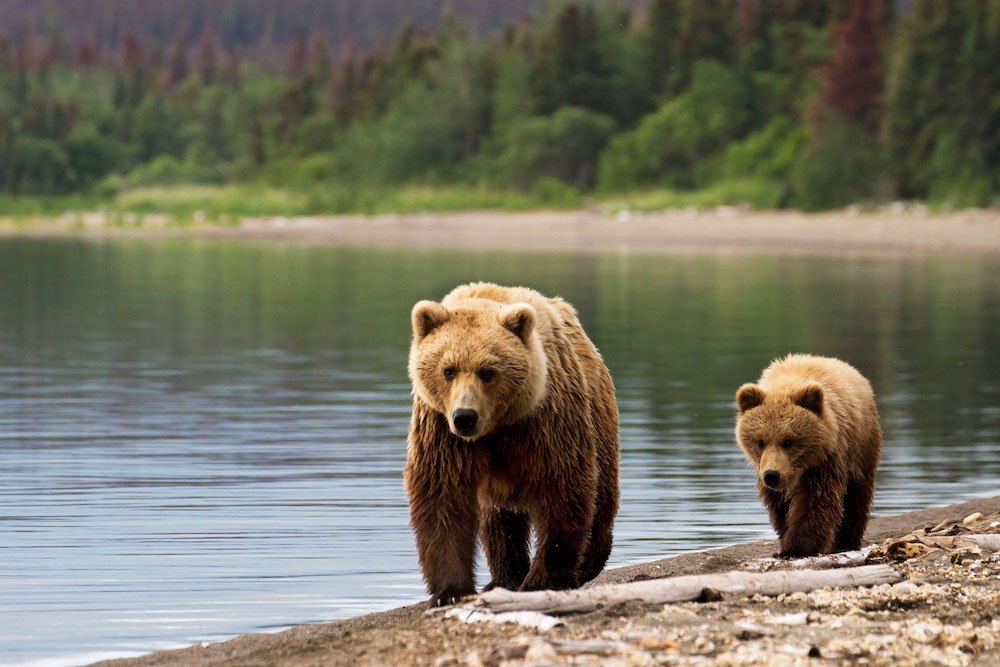
Exploring the Aleutian Islands offers adventurers the opportunity to connect with nature and experience the region’s rugged beauty firsthand.
However, it’s essential to prioritize safety and preparedness when venturing into this remote wilderness.
From unpredictable weather patterns to encounters with wildlife, being aware of potential risks and taking necessary precautions can help ensure a safe and enjoyable experience for all.
Weather-Related Safety Tips:
- Be Prepared for Rapid Weather Changes: The Aleutian Islands are known for their unpredictable weather, with conditions often changing rapidly. Be prepared for sudden shifts in temperature, wind, and visibility by dressing in layers and carrying waterproof gear, even on seemingly calm days.
- Monitor Weather Forecasts: Stay informed about local weather conditions by checking weather forecasts regularly before embarking on outdoor activities. Be aware of potential hazards such as high winds, heavy rain, and fog, and adjust your plans accordingly to ensure your safety.
- Respect the Power of the Ocean: The waters surrounding the Aleutian Islands can be treacherous, with strong currents, rough seas, and unpredictable swells. Exercise caution when engaging in water-based activities such as boating, kayaking, and fishing, and always wear a personal flotation device (PFD) while on the water.
Wildlife Encounters and Precautions:
- Give Wildlife Space: Respect the natural habitat of wildlife and maintain a safe distance when observing animals in the wild. Avoid approaching or disturbing nesting sites, feeding areas, or resting locations, and never attempt to feed or interact with wild animals.
- Be Bear Aware: Brown bears inhabit many areas of the Aleutian Islands, and encounters with these powerful predators are possible, especially in remote wilderness areas. Carry bear spray or bear deterrents, make noise while hiking to alert bears of your presence, and store food and garbage in bear-proof containers to minimize attractants.
- Stay Vigilant Around Marine Wildlife: Seals, sea lions, and sea otters are common sights in the waters around the Aleutian Islands. While these marine mammals are fascinating to observe, maintain a safe distance to avoid startling or disturbing them, and never attempt to approach or touch wild animals in the water.
Emergency Services and Medical Facilities:
- Know Your Location: Familiarize yourself with your surroundings and have a basic understanding of the geography and landmarks in the area. Carry a map, compass, or GPS device, and be prepared to navigate in case of emergency or getting lost.
- Emergency Communication: Ensure that you have a reliable means of communication, such as a satellite phone, VHF radio, or personal locator beacon (PLB), to call for help in case of emergency. Be aware that cell phone coverage may be limited or nonexistent in remote areas of the Aleutian Islands.
- Seek Medical Assistance: In the event of injury or illness, seek medical assistance as soon as possible. While medical facilities are available in larger communities such as Unalaska and Kodiak, access to emergency services may be limited in more remote areas. Carry a basic first aid kit and know how to administer basic medical care in case of emergencies.
9. Local Cuisine and Dining Options

Exploring the culinary delights of the Aleutian Islands offers visitors a chance to savor the flavors of Alaska’s rich culinary heritage, with an emphasis on fresh seafood, wild game, and locally sourced ingredients.
From cozy cafes and seafood shacks to fine dining restaurants, the Aleutian Islands offer a variety of dining experiences that showcase the region’s unique culinary traditions.
Overview of Local Cuisine and Specialties:
- Seafood Delicacies: With its abundant waters teeming with marine life, the Aleutian Islands are renowned for their fresh seafood offerings. Visitors can indulge in succulent Alaskan king crab, plump sea scallops, and tender halibut, served in a variety of mouthwatering preparations that highlight the natural flavors of the sea.
- Wild Game and Foraged Fare: In addition to seafood, the Aleutian Islands offer a bounty of wild game and foraged fare, including caribou, reindeer, and wild berries. Traditional dishes such as smoked salmon, reindeer sausage, and berry jams reflect the region’s indigenous heritage and connection to the land.
- Cultural Influences: The culinary landscape of the Aleutian Islands is influenced by a blend of indigenous, Russian, and American culinary traditions, resulting in a diverse array of flavors and culinary techniques. From hearty stews and savory pies to delicate pastries and desserts, visitors can experience a fusion of flavors that reflect the region’s cultural diversity.
Restaurants and Dining Experiences:
- Local Eateries: Visitors to the Aleutian Islands can enjoy a variety of dining options, ranging from casual cafes and seafood shacks to upscale restaurants and gourmet eateries. Sample freshly caught seafood at waterfront bistros, savor artisanal pastries at cozy bakeries, or enjoy panoramic views of the surrounding landscape at scenic dining establishments.
- Seafood Markets and Fishermen’s Wharves: For a taste of the freshest seafood the Aleutian Islands have to offer, visit local seafood markets and fishermen’s wharves, where you can purchase freshly caught fish, shellfish, and other marine delicacies direct from the source. Many markets also offer prepared seafood dishes and snacks for on-the-go dining.
- Cultural Events and Food Festivals: Throughout the year, the Aleutian Islands host a variety of cultural events and food festivals that celebrate the region’s culinary heritage. From seafood festivals and salmon bakes to cultural gatherings and culinary competitions, these events offer visitors a chance to sample local delicacies and experience the vibrant culinary scene of the Aleutian Islands.
Dietary Considerations for Visitors:
- Allergies and Dietary Restrictions: Visitors with food allergies or dietary restrictions should communicate their needs to restaurant staff and chefs when dining out in the Aleutian Islands. Many restaurants are accustomed to accommodating special dietary requests and can provide alternative menu options or modifications to suit individual preferences.
- Local Ingredients and Seasonal Availability: Keep in mind that the availability of certain ingredients may vary depending on the season and local harvests. Embrace the opportunity to sample seasonal specialties and regional delicacies that showcase the best of the Aleutian Islands’ culinary bounty.
- Hydration and Water Safety: Ensure that you stay hydrated and drink plenty of water, especially when engaging in outdoor activities or exploring remote areas of the Aleutian Islands. While tap water is generally safe to drink in most communities, it’s advisable to carry bottled water or a water purification system when venturing off the beaten path.
10. Shopping and Souvenirs

Exploring the vibrant shopping scene of the Aleutian Islands offers visitors the opportunity to discover unique souvenirs, local crafts, and artisanal products that celebrate the region’s rich cultural heritage and natural beauty.
From handcrafted artwork and traditional handicrafts to locally sourced goods and specialty items, there’s something for everyone to treasure as a memento of their journey through this remote wilderness.
Unique Souvenirs and Local Crafts:
- Native Artwork: The Aleutian Islands are home to a vibrant community of artists and artisans whose work reflects the region’s indigenous heritage and cultural traditions. Visitors can find a variety of native artwork, including intricate carvings, woven baskets, and traditional Aleutian masks, which serve as tangible reminders of the islands’ rich cultural legacy.
- Handcrafted Jewelry: Local jewelers and artisans create stunning pieces of handcrafted jewelry inspired by the natural beauty and rugged landscapes of the Aleutian Islands. Look for intricate designs featuring native materials such as ivory, bone, and semi-precious stones, which showcase the unique craftsmanship and artistic expression of the region.
- Traditional Handicrafts: From intricately woven baskets and beaded jewelry to finely crafted textiles and pottery, traditional handicrafts are cherished treasures that reflect the cultural heritage and artistic traditions of the Aleutian Islands. Visitors can explore local markets and galleries to discover one-of-a-kind pieces created by skilled artisans and craftsmen.
Where to Find Shops and Markets:
- Local Markets and Artisanal Shops: Explore the streets of towns such as Unalaska and Kodiak to discover charming boutiques, artisanal shops, and local markets that showcase the best of the Aleutian Islands’ craftsmanship and creativity. From quaint storefronts selling handmade gifts to bustling markets brimming with local produce and artisanal goods, there’s no shortage of shopping opportunities to explore.
- Arts and Crafts Fairs: Keep an eye out for arts and crafts fairs, cultural festivals, and community events where local artisans and craftsmen showcase their work and sell handmade goods to the public. These events provide a unique opportunity to meet artists, learn about their creative process, and purchase authentic souvenirs directly from the source.
- Online Marketplaces: For those unable to visit the Aleutian Islands in person, many local artisans and businesses offer their products for sale through online marketplaces and artisanal websites. Explore virtual storefronts and online galleries to discover a curated selection of handcrafted goods and unique souvenirs that capture the spirit of the Aleutian Islands.
Supporting Local Businesses and Artisans:
- Shop Local: By supporting local businesses and artisans, visitors can contribute to the economic vitality and cultural preservation of the Aleutian Islands’ communities. Choose to shop at independently owned shops, galleries, and markets that showcase locally made products and support the livelihoods of local artisans and craftsmen.
- Learn About the Artists: Take the time to learn about the artists and artisans behind the products you purchase, and appreciate the skill, creativity, and cultural significance that goes into each handmade item. Engage with artists, ask questions about their work, and gain a deeper understanding of the stories and traditions that inspire their craft.
- Spread the Word: Share your experiences and discoveries with friends, family, and fellow travelers, and encourage others to support local businesses and artisans when visiting the Aleutian Islands. By spreading the word and promoting the unique cultural heritage and artistic talents of the region, you can help preserve and celebrate the spirit of the Aleutian Islands for generations to come.
11. Language and Communication

Navigating language and communication in the Aleutian Islands provides visitors with a glimpse into the region’s cultural diversity and linguistic heritage.
While English serves as the primary language of communication, the islands are home to indigenous communities with their own unique languages and dialects, reflecting the rich tapestry of cultural traditions and historical influences that define the region.
Language Spoken in the Aleutian Islands:
- English: English is the predominant language spoken in the Aleutian Islands, serving as the primary means of communication among residents, businesses, and visitors. English-speaking travelers will find it easy to communicate with locals and navigate daily interactions during their time in the region.
- Aleut: The Aleutian Islands are home to indigenous Aleut communities whose traditional language, Aleut, is still spoken by some residents today. Aleut is a complex language with several dialects, each reflecting the unique cultural heritage and geographic location of its speakers. While not widely spoken outside of indigenous communities, efforts are being made to preserve and revitalize the Aleut language through cultural programs and educational initiatives.
Tips for Communication with Locals:
- Respect Local Customs and Traditions: When communicating with locals in the Aleutian Islands, it’s important to show respect for local customs, traditions, and cultural sensitivities. Take the time to learn about the cultural norms and etiquette of the communities you visit, and be mindful of differences in communication styles and interpersonal interactions.
- Be Patient and Understanding: When interacting with residents whose first language may not be English, be patient and understanding in your communication efforts. Speak clearly and at a moderate pace, and be willing to repeat or rephrase information as needed to ensure mutual understanding and effective communication.
- Embrace Cultural Exchange: Engage with locals in meaningful conversations, ask questions about their cultural heritage and traditions, and be open to learning from their unique perspectives and experiences. By fostering cultural exchange and dialogue, you can forge meaningful connections and gain a deeper appreciation for the diversity of the Aleutian Islands’ communities.
Translation Services and Language Resources:
- Local Interpretation Services: In communities with significant indigenous populations, local interpretation services may be available to assist with communication between English-speaking visitors and non-English-speaking residents. These services can facilitate cross-cultural communication and enhance the overall visitor experience.
- Language Resources: Travelers interested in learning more about the Aleut language and culture can access a variety of language resources and educational materials online and through local cultural organizations. Language learning apps, dictionaries, and language courses offer opportunities to explore the intricacies of the Aleut language and deepen your understanding of its cultural significance.
- Community Cultural Centers: Cultural centers and heritage museums in the Aleutian Islands often serve as hubs for language preservation and cultural education, offering workshops, language classes, and cultural events that promote the Aleut language and traditions. Visitors are encouraged to explore these resources and engage with local communities to learn more about the linguistic and cultural diversity of the region.
12. Internet and Connectivity

Navigating internet and connectivity options in the Aleutian Islands requires an understanding of the region’s remote and rugged landscape, where access to modern telecommunications infrastructure may be limited or sporadic.
While efforts are underway to improve connectivity and expand telecommunications services, visitors should be prepared for varying levels of internet access and cell phone coverage during their stay in the islands.
Availability of Internet and Cell Phone Coverage:
- Internet Access: In larger communities such as Unalaska and Kodiak, visitors may find access to broadband internet services available through local providers and businesses. However, internet speeds and reliability may vary, particularly in more remote areas and smaller villages where infrastructure is limited.
- Cell Phone Coverage: Cell phone coverage in the Aleutian Islands is provided by major carriers such as AT&T, Verizon, and GCI Wireless, with coverage extending to many populated areas and main transportation routes. However, coverage may be limited or nonexistent in more remote and undeveloped areas of the islands, particularly in mountainous or coastal regions.
Tips for Staying Connected While on the Islands:
- Check Coverage Maps: Before traveling to the Aleutian Islands, check coverage maps and network availability provided by your cell phone carrier to determine the extent of coverage in your destination areas. Be aware that coverage maps may not always accurately reflect real-world conditions, particularly in remote or rugged terrain.
- Consider Satellite Communication: For travelers venturing into remote areas where cell phone coverage may be unreliable, satellite communication devices such as satellite phones or personal locator beacons (PLBs) can provide a reliable means of communication in case of emergencies or unforeseen circumstances.
- Utilize Wi-Fi Hotspots: Many hotels, lodges, and public facilities in larger communities offer complimentary Wi-Fi access to guests and visitors. Take advantage of Wi-Fi hotspots to stay connected, check email, and access online resources while exploring the Aleutian Islands.
Offline Activities and Entertainment Options:
- Immerse Yourself in Nature: Disconnect from digital devices and immerse yourself in the natural beauty and wilderness of the Aleutian Islands. Explore scenic hiking trails, observe wildlife in its natural habitat, and take time to appreciate the sights, sounds, and serenity of the great outdoors.
- Cultural Experiences: Engage in cultural experiences and activities that celebrate the rich heritage and traditions of the Aleutian Islands. Visit local museums, attend cultural events and festivals, and participate in workshops and demonstrations that offer insights into the region’s indigenous culture and history.
- Outdoor Recreation: Take advantage of outdoor recreational opportunities such as fishing, kayaking, birdwatching, and wildlife photography. Spend your days exploring rugged coastlines, pristine beaches, and secluded coves, and embrace the spirit of adventure and exploration that defines life in the Aleutian Islands.
13. Environmental Conservation
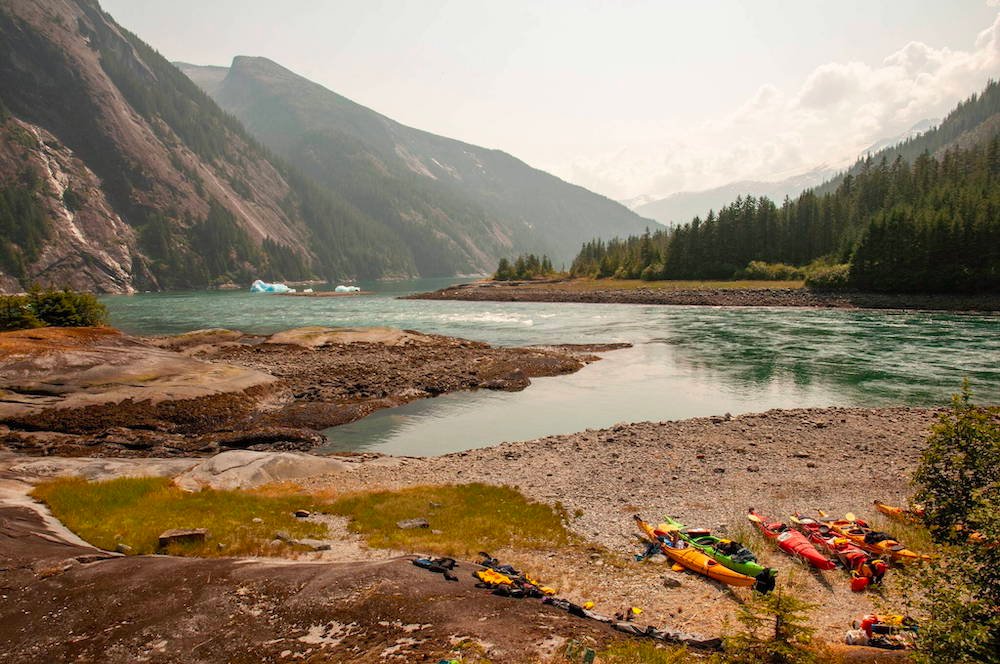
Preserving the pristine natural beauty and ecological integrity of the Aleutian Islands is paramount to safeguarding the region’s unique biodiversity, cultural heritage, and wilderness character for future generations to enjoy.
As visitors to this remote and fragile ecosystem, it’s essential to embrace responsible tourism practices and actively participate in conservation efforts that promote sustainability, stewardship, and environmental awareness.
Importance of Preserving the Environment:
- Biodiversity and Ecosystem Health: The Aleutian Islands are home to a diverse array of plant and animal species, many of which are endemic to the region and found nowhere else on Earth. Preserving the islands’ natural habitats and ecosystems is essential for maintaining biodiversity, supporting healthy wildlife populations, and safeguarding ecological balance.
- Cultural and Historical Significance: The Aleutian Islands have been inhabited by indigenous peoples for thousands of years, whose cultural traditions, livelihoods, and spiritual connections are deeply intertwined with the land and sea. Protecting cultural sites, ancestral homelands, and sacred landscapes is essential for honoring the region’s indigenous heritage and preserving its cultural legacy.
Responsible Tourism Practices:
- Leave No Trace: Practice Leave No Trace principles to minimize your environmental impact and preserve the natural integrity of the Aleutian Islands. Pack out all trash and litter, dispose of waste properly, and refrain from disturbing wildlife, vegetation, and cultural artifacts.
- Respect Wildlife and Habitat: Observe wildlife from a safe distance, avoid approaching or feeding wild animals, and refrain from disrupting nesting sites or breeding areas. Respect natural habitats and sensitive ecosystems by staying on designated trails and minimizing your footprint in the wilderness.
- Conserve Resources: Practice water conservation and energy efficiency measures to reduce your environmental footprint while visiting the Aleutian Islands. Conserve water, minimize energy consumption, and support businesses and accommodations that prioritize sustainable practices and environmental stewardship.
Participating in Conservation Efforts:
- Support Local Conservation Organizations: Get involved with local conservation organizations, environmental groups, and community initiatives that are dedicated to protecting the natural environment and cultural heritage of the Aleutian Islands. Volunteer your time, participate in conservation projects, and support fundraising efforts that promote sustainability and conservation awareness.
- Educate Yourself and Others: Take the time to learn about the environmental issues facing the Aleutian Islands, including habitat loss, invasive species, climate change, and pollution. Share your knowledge and insights with others, and advocate for policies and practices that prioritize environmental protection and conservation.
- Leave a Positive Impact: Leave a positive impact on the communities and ecosystems of the Aleutian Islands by supporting responsible tourism practices, engaging in meaningful cultural exchanges, and fostering connections with local residents and indigenous communities. By leaving a positive legacy of conservation and stewardship, you can help ensure that the Aleutian Islands remain a vibrant and thriving ecosystem for generations to come.
14. Cultural Etiquette and Respect
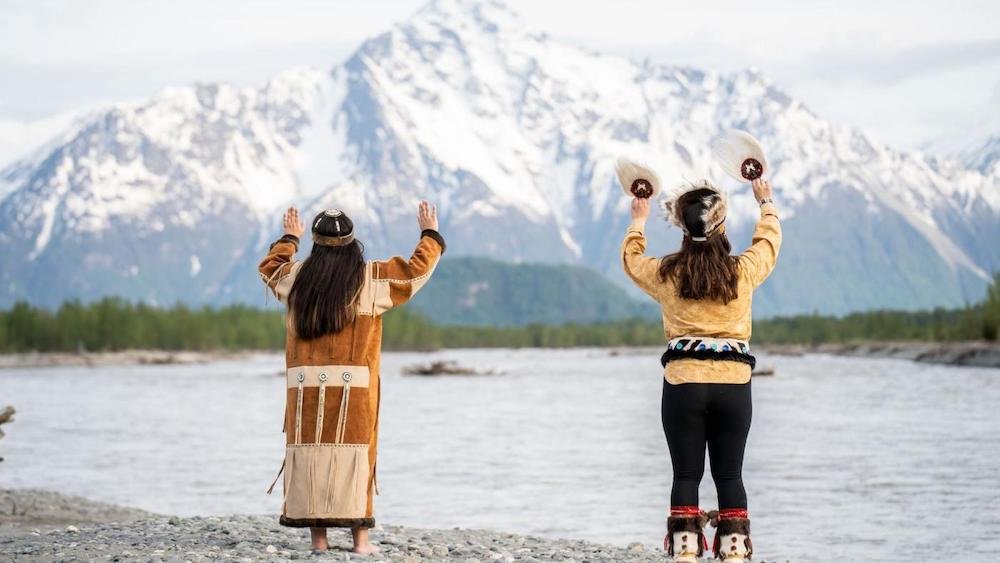
Respecting cultural norms, traditions, and customs is essential when visiting the Aleutian Islands, where indigenous heritage and community values are deeply rooted in the fabric of daily life.
By embracing cultural sensitivity and demonstrating respect for local traditions, visitors can foster meaningful connections with residents and indigenous communities while experiencing the rich cultural tapestry of the region.
Cultural Norms and Customs:
- Hospitality and Generosity: Hospitality is a cornerstone of Aleutian culture, where residents are known for their warmth, generosity, and welcoming spirit towards visitors. Expect to be greeted with hospitality and kindness, and reciprocate with gratitude and respect for the local community.
- Cultural Diversity: The Aleutian Islands are home to a diverse array of cultures, languages, and traditions, including indigenous Aleut, Russian, and American influences. Embrace the region’s cultural diversity and celebrate the unique heritage and contributions of each community.
Tips for Respectful Behavior Towards Locals:
- Listen and Learn: Take the time to listen to local residents, elders, and community leaders, and learn about their cultural traditions, history, and way of life. Show genuine interest and curiosity in the stories, customs, and values that shape the identity of the Aleutian Islands’ communities.
- Respect Personal Space: Respect personal space and boundaries when interacting with locals, and be mindful of cultural differences in communication styles and interpersonal interactions. Use polite language, maintain eye contact, and express appreciation for the opportunity to engage with the local community.
- Ask Permission: When visiting cultural sites, sacred landmarks, or private property, always ask permission from local authorities or community members before entering or taking photographs. Respect sacred spaces and cultural artifacts, and adhere to any guidelines or restrictions provided by cultural custodians.
Understanding and Appreciating Local Traditions:
- Participate in Cultural Experiences: Engage in cultural experiences and activities that offer insights into the traditions, rituals, and practices of the Aleutian Islands’ indigenous communities. Attend cultural events, festivals, and ceremonies, and participate in workshops and demonstrations that showcase traditional crafts, music, and dance.
- Honor Elders and Ancestors: Show reverence and respect for elders and ancestors, who play a central role in preserving and passing down the cultural heritage and oral traditions of the Aleutian Islands. Seek opportunities to learn from elders, listen to their stories, and honor their wisdom and contributions to the community.
- Support Indigenous Artisans and Craftspeople: Support local artisans, craftspeople, and cultural practitioners by purchasing handmade crafts, artwork, and traditional handicrafts that reflect the unique cultural heritage and artistic traditions of the Aleutian Islands. By investing in locally made products, you support the economic livelihoods of indigenous communities and help preserve traditional craftsmanship for future generations.
Conclusion:
Exploring the rugged beauty and rich cultural heritage of the Aleutian Islands offers visitors a journey of discovery and adventure unlike any other.
From breathtaking landscapes and diverse wildlife to vibrant indigenous communities and cultural traditions, the Aleutian Islands captivate the imagination and inspire a deep appreciation for the wonders of nature and the resilience of the human spirit.
In this comprehensive guide, we’ve explored everything you need to know before visiting the Aleutian Islands, from geography and climate to transportation options, accommodations, outdoor activities, and cultural experiences.
We’ve highlighted the importance of environmental conservation, responsible tourism practices, and cultural sensitivity in preserving the natural and cultural treasures of this remote wilderness.
As you embark on your journey to the Aleutian Islands, we encourage you to embrace the spirit of responsible travel and stewardship, respecting the environment, honoring local traditions, and fostering meaningful connections with the communities and landscapes you encounter along the way.
By treading lightly and leaving a positive impact, you can help ensure that the Aleutian Islands remain a pristine and vibrant destination for generations to come.

FAQ’s About the Aleutian Islands:
Does Anyone Live on Aleutian Islands?
Yes, people do live on the Aleutian Islands. The islands are inhabited by indigenous Aleut communities as well as residents of various backgrounds, including fishermen, researchers, and military personnel.
Who Currently Owns the Aleutian Islands?
The Aleutian Islands are part of the United States and are governed as part of the state of Alaska. The islands are under the sovereignty of the United States.
What Aleutian Islands Belong to Russia?
The Aleutian Islands are primarily part of the United States.
However, the easternmost Aleutian Islands, including Attu and Kiska, were occupied by Japan during World War II but were later returned to the United States. There are no Aleutian Islands that belong to Russia.
What Is Special About the Aleutian Islands?
The Aleutian Islands are renowned for their rugged beauty, rich biodiversity, and unique cultural heritage.
They are home to diverse wildlife, stunning landscapes, and indigenous Aleut communities with a deep connection to the land and sea.
Can You Go to the Aleutian Islands?
Yes, you can visit the Aleutian Islands. However, access to the islands can be challenging due to their remote location and limited transportation options.
Visitors can reach the Aleutian Islands by air or sea, with regular flights and ferry services available from mainland Alaska.
What Military Base Is in the Aleutian Islands?
The Aleutian Islands are home to several military installations, including the Eareckson Air Station on Shemya Island.
The air station serves as a surveillance and early warning facility operated by the United States Air Force.
Does Russia Own Any of the Aleutian Islands?
No, Russia does not own any of the Aleutian Islands. The Aleutian Islands are part of the United States and are governed as part of the state of Alaska.
What Language Do They Speak on Aleutian Island?
English is the predominant language spoken on the Aleutian Islands, as it is throughout the United States.
However, some residents may also speak Aleut, which is an indigenous language of the region.
Why Do They Call It Unalaska?
Unalaska is the name of one of the main islands in the Aleutian chain.
The name “Unalaska” is derived from the Aleut word “Ounalashka,” meaning “near the peninsula” or “near the mainland.”
Unalaska has a rich history as a major Aleut settlement and later became a center for Russian fur trading in the 18th century.
